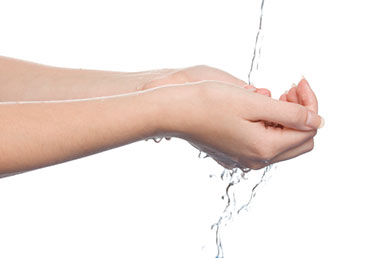
Very often throughout our lives we worry a great deal about our internal organs. Our heart, lungs, kidneys, & liver get most of our attention in leading a healthy diet and taking supplements that support good organ function but we often ignore the largest and arguably the most complex organ in the body namely the skin.
Below are some very interesting skin facts and also a link that goes into “GREAT DETAIL” about skin anatomy and is as excellent a detailed overview of the skin that I’ve ever read.
Skin Anatomy and Skin Health

In this issue of the newsletter, we’re going to explore skin anatomy. It’s far more interesting than you might think. But beyond interesting, it’s important. We need to understand skin anatomy so we can talk about skin health, skin physiology, and all of the things that go wrong with your skin–including aging. Make no mistake: your skin is more than just a shrink wrap designed to cover your body. It is your largest organ (like your heart, liver, and spleen), weighing in at around six pounds. Stretched out, it averages about 20 square feet.
Your skin is physiologically important for three primary reasons:
- It is a major organ of transportation in your body. It moves waste such as sweat and carbon dioxide out of your body. And it moves vital nutrients such as oxygen into your body. It is vital to remember, that as an organ of transportation, it can just as easily carry harmful substances (pesticides, petroleum based estrogens, etc.) into your body, as it can beneficial substances–if you are not careful.
- It is your first line of defense in protecting your internal organs from both trauma and invaders.
- And, as the most visible organ in your body, it serves as a canary in the coal mine, constantly indicating the state of your overall health. If your skin is prematurely dried up, wrinkled, gray, and generally unhealthy in appearance, it is a strong indicator that all of the other organs in your body (heart, liver, kidneys, etc.) are seriously compromised as well.
At your next dinner party you can amuse and delight your guests with these additional tidbits about skin.
- By the age of 70, each of us has shed about 40 pounds of dead skin.
- And if that doesn’t impress them, maybe this will. Of all the dust you see floating around in the average house, 75% of it is composed of dead skin cells.
- Or how about, in one square inch of skin there are 625 sweat glands and 90 oil glands. There are also 19 million cells, 19 feet of blood vessels, 19,000 sensory cells, 65 hairs, and, best of all, 20 million microscopic animals such as mites…in each square inch.
- Your skin is generally between 1.5-2 millimeters thick. It contains a rich field of blood and lymphatic vessels can carry any toxic substance that penetrates its outer layers quickly throughout the body.

Skin Microbiome
Virtually all anatomy textbooks, when talking about the skin, stop with the stratum corneum. They are wrong–or at least incomplete. In the same way that the probiotics that live in your intestinal tract are not extraneous invaders, but rather an essential component of your intestinal health, so too are the bacteria that live on your skin an essential component of your skin’s health–and your overall health for that matter. The skin flora, more properly referred to as the skin microbiome or skin microbiota, are the microorganisms which reside on your skin. Many of these are bacteria, of which there are around 1,000 species commonly found on human skin. The total number of bacteria living on the skin of an average human has been estimated at about 1 trillion. Most are found in the superficial layers of the epidermis and the upper parts of hair follicles.
Yes, some of these bacteria are “potentially” harmful. Staph and E. coli, for example, are found on most people, but they are usually held in check by the other bacteria on your skin and never produce any symptoms. That said, most of the flora found on your skin are beneficial in that they prevent the bad guys from colonizing the skin surface, either by competing for nutrients, secreting chemicals against them, or stimulating the skin’s immune system.2 These are what hold the Staph and E. coli that we mentioned a moment ago in check. This protection, however, can break down allowing the pathogens to cause skin diseases and even enter the bloodstream, thus creating life-threatening diseases. What causes this breakdown?
- If a person’s immune system is suppressed.
- If proper hygiene with soap and water is not practiced, this gives pathogens a chance to take root and multiply.
- If a person overindulges in antibacterial soap, this encourages the breeding of super, drug-resistant pathogens. If the water you bathe with is chlorinated. Chlorine kills all the bacteria on your skin, including the good–thus creating an opening for opportunistic pathogens that may have more resistance to chlorine to colonize your skin with wild abandon.
The bottom line is that your skin microbiome is an essential layer in the anatomy of your skin. You want to take care of it.
To read more on this excellent article please click this link to Jon Barron’s website.
we’d love to meet you
Schedule a consultation
Are you ready to take the first step towards achieving your goals? Book Now or Contact Us first with any questions today!
Have a Question?




